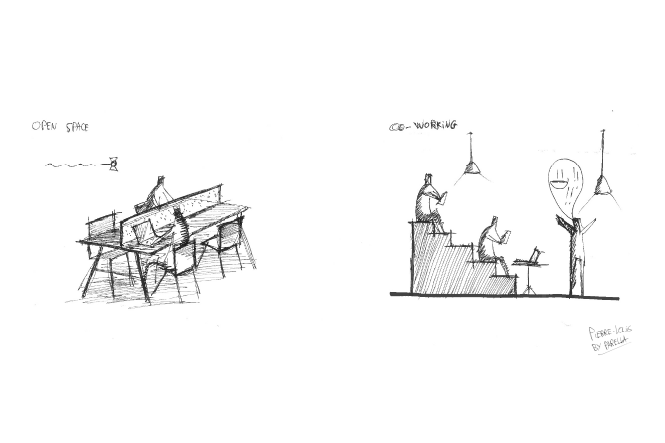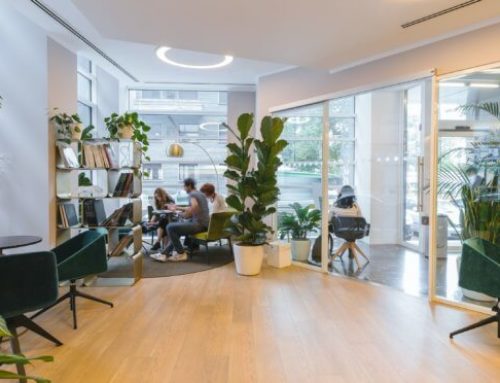Flex Office: feedback and perspectives

September 2021
During a webinar organised by the EBG (1st club for digital innovation), Ludovic Legendre, Managing Partner of the P&T activity at Parella, welcomed 2 guests to discuss the theme of "Corporate real estate in the flex-office era: towards a new organisation". Our two guests, Laurent Lesmarie, Head of the Commercial and Social Real Estate Department at SNCF and Xavier Perrin, Vice President Global Real Estate at Schneider Electric, were able to discuss 3 main ideas.
Acceptance of the fear of the Flex Office.
It is not unusual for Flex Office to appear anxiety-provoking. This fear must be acknowledged and accepted.
The first element of the answer lies in objectification, in order to bring the discussion of feelings back into the realm of rationality. To do this, several tools can be used: the rate of frequentation of the buildings thanks to the access badge, and the rate of occupation of work positions, at the workstation when they are not allocated and in the meeting room and any informal space. This data makes it possible to show several things. On the one hand, to make employees and social partners aware of the reality of occupation. On the other hand, to see, in the context of an experiment, the spaces that work and those that work less well, in order to push for maximum optimisation and transformation of the spaces in line with the observed uses.
The second element of the response is to support employees through an in-depth study of their needs, in order to continue these adaptations regularly after the delivery of the spaces, in line with the evolution of the organisations and uses.
Laurent's enthusiasm for a better working environment
In recent months, teams have been able to adapt to a real cataclysm in their working conditions. We must have confidence in the ability of employees and managers to adapt to these dynamic working environments aimed at providing comfort and performance. The feedback is positive. And if you fear a loss of contact, on the contrary, this new way of working is characterised by a communal appropriation of space, moving from "I" to "we" [Laurent]. Gone is the photo of the dog on the desk, but welcome to us.
Xavier's tips for making real estate flexible
But when it comes to dynamic environments that are constantly changing, how can costs be controlled when the surfaces and their layout represent significant fixed assets?
Two solutions are being studied at Schneider Electric [Xavier]:
Firstly, on the scale of leasing, with annual modulations, as opposed to the traditional 9-year lease, an eternity in terms of current organisational developments.
Then there is the fitting out, which is costly in terms of removing partitions and adapting the HVAC. In order to adjust, we can favour furniture-type solutions (without work) or modular fittings under a rental contract such as a "fitting service" for which you only pay for what you use, and it is up to the fitter to make the adjustments.
To sum up this hour of exchanges, you have the right not to believe it, but the transformation is underway. It will go well. And there is still a tremendous field of possibility to explore in the new ways of working.
Julie-Maud Godard, Director of People & Transformation at Parella




